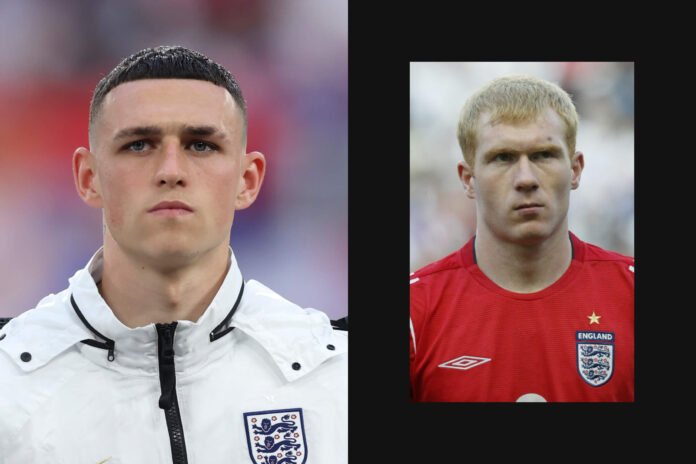Tactically, the frustration and the fascination of international football comes from the same concept: a manager is stuck with a specific and limited group of players to choose from. Whereas weaknesses in the club game are addressed by new signings, in the international game you simply have to cope.
And so there’s a common dilemma for managers with a problem position: do you opt for a player who is accustomed to playing in that position, but probably isn’t at the level of his team-mates, or do you select a top-class player who is excellent in another role, and ask him to adjust?
The perhaps surprising lesson from international football, at least over the last couple of decades, is the latter.
Gareth Southgate’s issue — well, one of them — is on the left wing. It would be slightly disingenuous to forget the fact that Southgate has happily omitted three players who are comfortable in that position and who have a track record of playing well for England — Marcus Rashford, Jack Grealish and Raheem Sterling. Their club form has resulted in them being overlooked for the Euro 2024 squad, which constitutes something of a gamble. But it’s actually in keeping with what most supporters seemed to want: players picked ‘on form’ rather than ‘on reputation’.
Southgate’s two natural left-wing options in the squad are Anthony Gordon and Eberechi Eze.
Gordon enjoyed a good season at Newcastle, mainly impressing with his speed and directness, while Eze is immediately impressive whenever you see him, although has encountered injury problems for Crystal Palace, starting less than two-thirds of Premier League games last season. Equally, he’s not necessarily a proper left winger either; he looks more at home as a No 8 or a No 10. So, while a natural dribbler, he wouldn’t necessarily be a perfect fit.
(Justin Setterfield/Getty Images)
And you can understand Southgate’s desire to play Phil Foden in that position. Foden has just been voted the best player in the Premier League. Harry Kane, the Bundesliga’s top goalscorer, is the obvious No 9. Jude Bellingham, close to the best player in La Liga, is being fielded in the No 10 position that seems his best fit. Bukayo Saka was England’s most dangerous attacker in the first half against Serbia from the right. Foden, therefore, probably needs to be accommodated on the left.
For England fans of a certain generation, this will bring back memories of Paul Scholes being used from the left at Euro 2004. This was actually a perfectly reasonable compromise from Sven-Goran Eriksson at the time but has since become the go-to example of a clumsy tactical fit by virtue of people ignoring almost every bit of context imaginable.
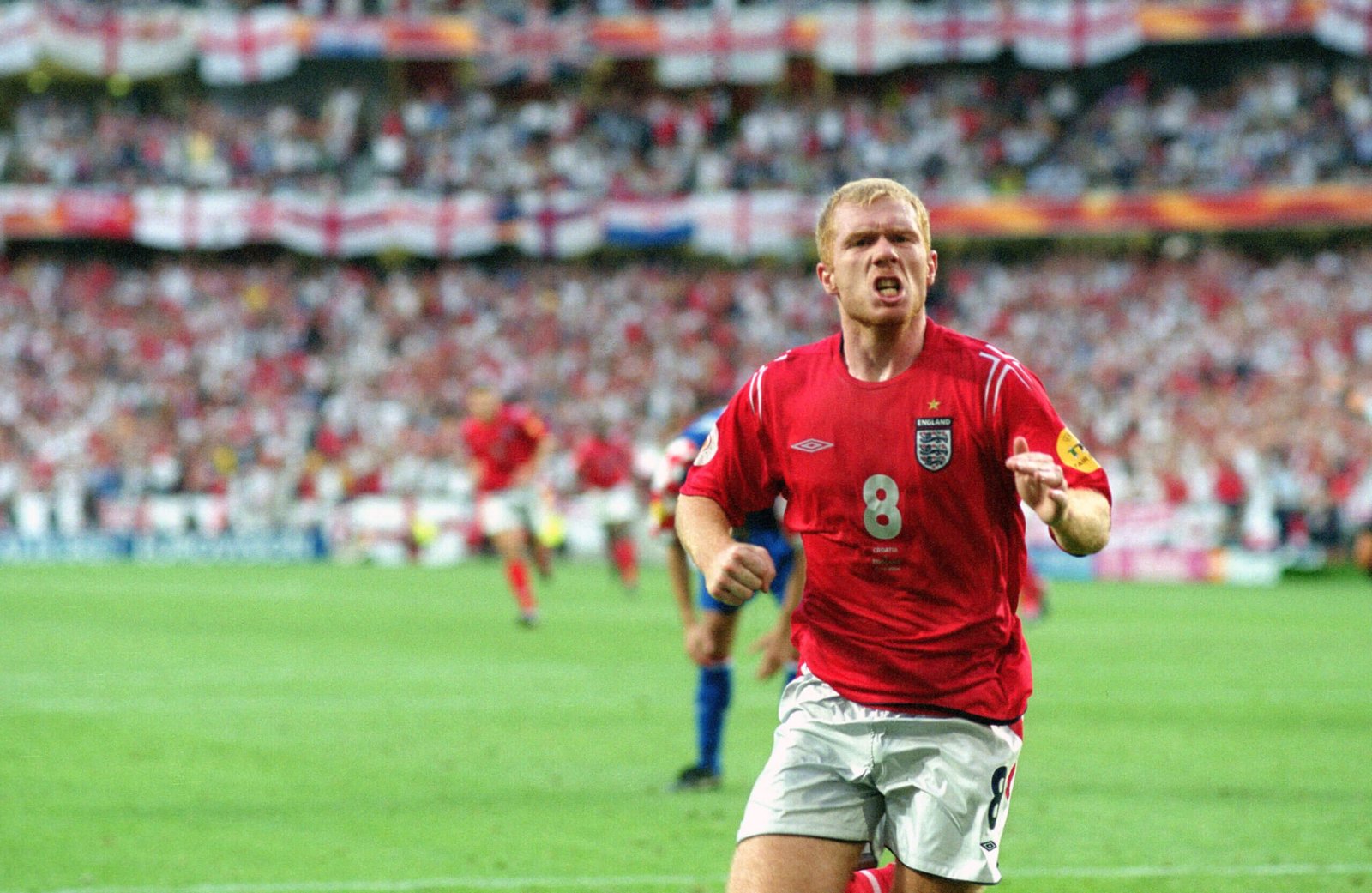
Scholes had a decent Euro 2004 playing on the left of midfield (Mark Leech/Offside via Getty Images)
Here’s a quick rundown. First, Scholes had played terribly for England for two years and was the player most supporters wanted dropped. It was a show of faith to keep him in the side. Second, Scholes had played perfectly well from the left for Manchester United on several occasions over the previous couple of seasons, as he regularly acknowledged.
Third, Scholes was not the deep playmaker he would later become, but more of an attacking operator. Fourth, both Steven Gerrard and Frank Lampard were deeper players than they would become, and at the time seemed a perfectly workable partnership on paper. Fifth, Ashley Cole’s overlapping allowed England’s left-sided midfielder to drift inside. Sixth, Eriksson actually wanted to use a diamond midfield but the players didn’t want to play that way and convinced him to switch to a flat four instead. Seventh, and most pertinently, England actually played well at Euro 2004 and, but for Wayne Rooney’s injury, might have advanced further than the quarter-final.
But anyway, a common theme of English football’s failure is not working out what other countries do well and how they find success. And a curiously common feature of successful international sides — mainly at World Cups — is fielding central midfielders on the left.
For Italy at World Cup 2006, it was Simone Perrotta, a right-footed, box-to-box midfielder for Roma, who tucked inside and allowed left-back Fabio Grosso to provide the width.
For Spain at World Cup 2010, it was Andres Iniesta, who disliked playing from wide but did so on occasion, particularly in big games, for Pep Guardiola’s Barcelona. In fact, Spain’s initial plan was actually using centre-forward David Villa from that side, although he ended up playing through the middle because Fernando Torres struggled for form.
Iniesta took on a more attacking role for his country and drifted infield to good effect, including scoring the winner in the final.
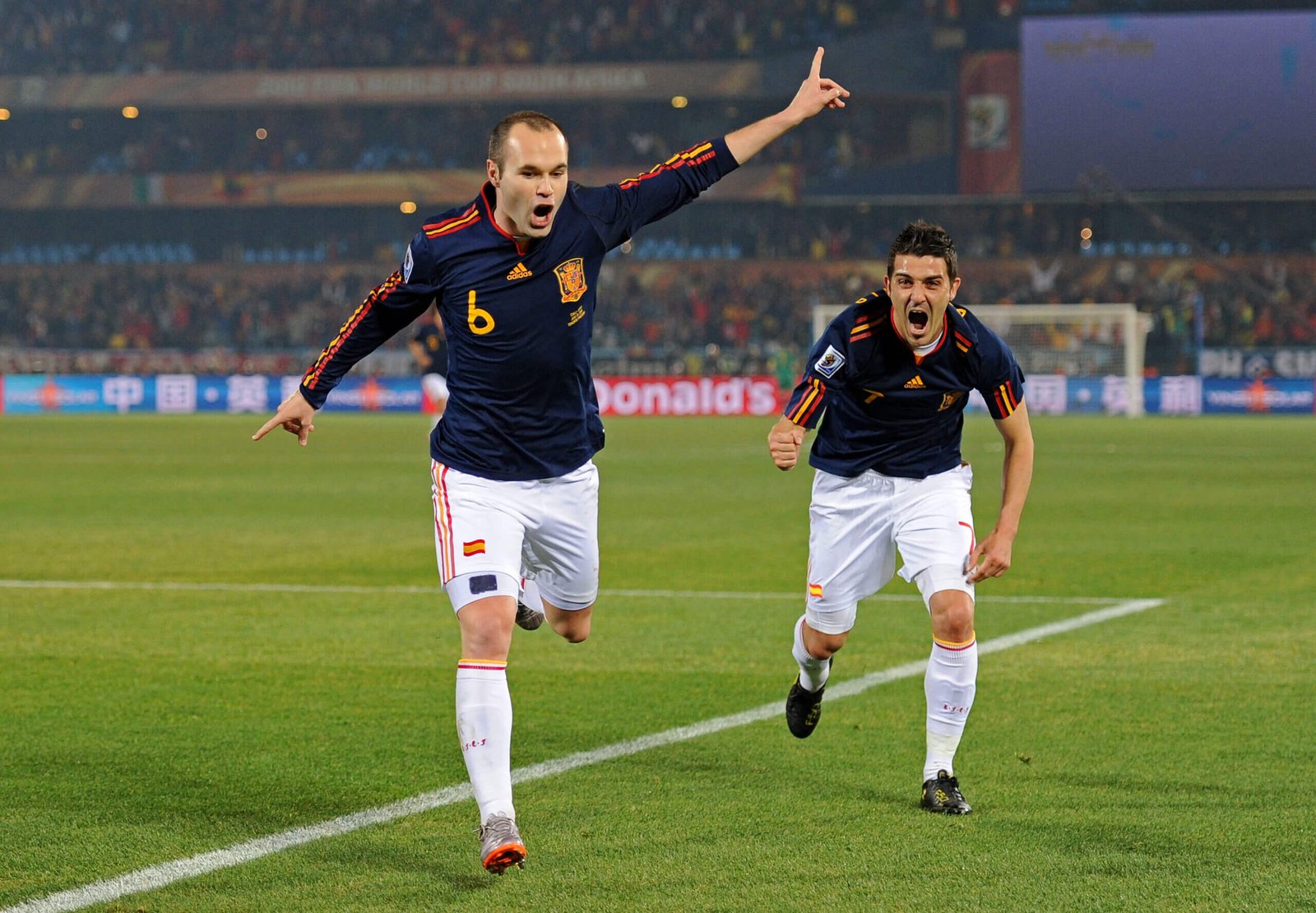
(Jasper Juinen/Getty Images)
For Germany at World Cup 2014, it was Mesut Ozil, who wanted to play as Germany’s No 10, but other tactical issues meant Joachim Low switched from 4-2-3-1 to 4-3-3, and there was no natural role through the middle for Ozil. He looked a little unhappy out on the flank, and was peripheral even in the momentous 7-1 thrashing of Brazil, when most of Germany’s goals came from the right.
But it got a world-class player into the side, which tends to work.
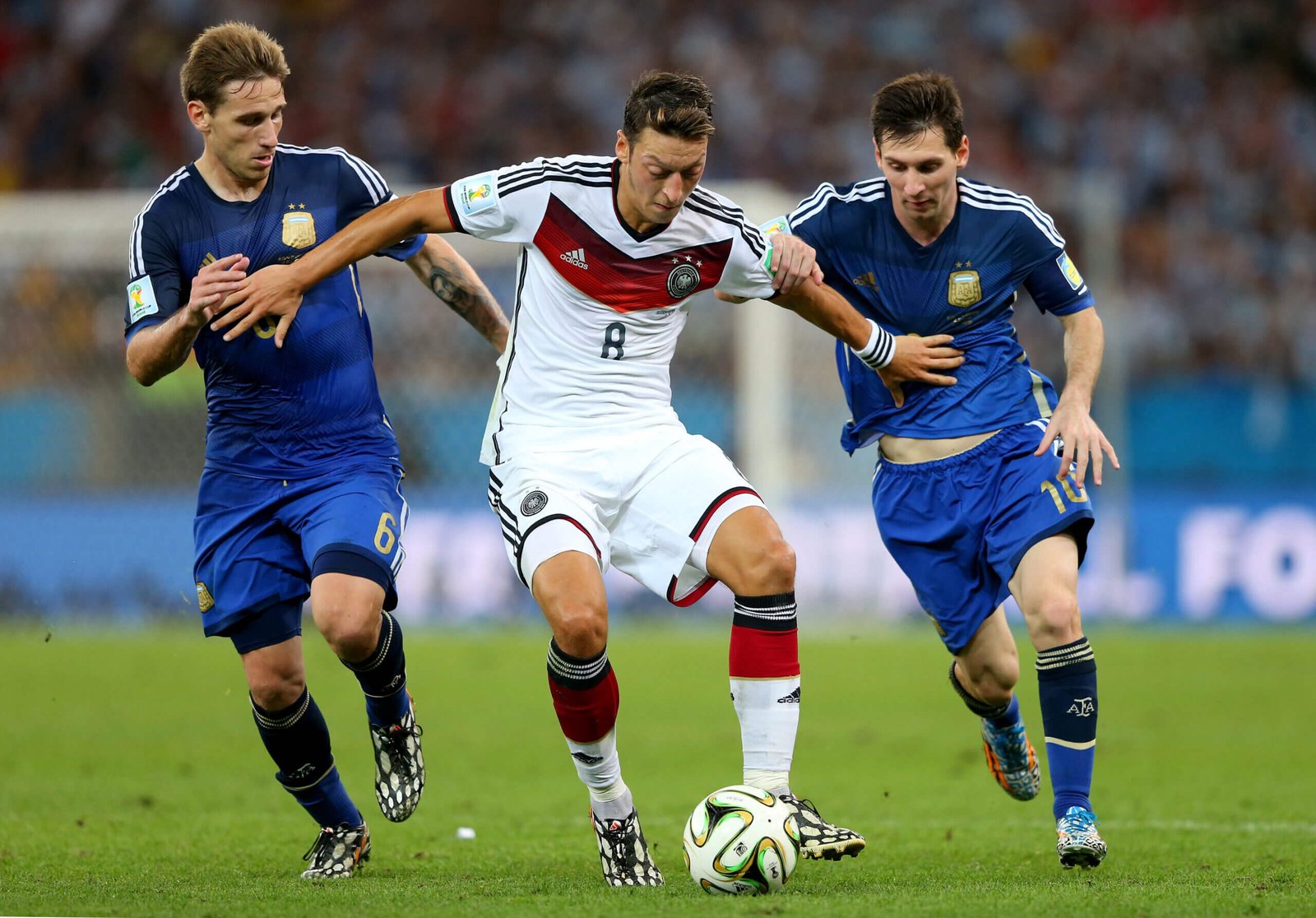
(Alex Livesey – FIFA/FIFA via Getty Images)
And for France at World Cup 2018, it was Blaise Matuidi playing that role. More in the mould of Perrotta than Iniesta or Ozil — a worker rather than a creator — he provided the balance which allowed Kylian Mbappe to strike from the other flank.
The World Cup 2022 winners were something of an exception — Angel Di Maria dominated the final in a classic left-wing position. But even that was something of a surprise. He’d been expected to start from the right. Argentina’s left-sided midfielder in the previous knockout games was Alexis Mac Allister.
Go through recent European Championship successes and you’ll struggle to find a proper left midfielder either. Spain in 2008 and 2012 used Iniesta or David Silva from that side, interchanging in the wide positions. Portugal in 2016 used a diamond midfield, with the width coming from full-back or Cristiano Ronaldo’s drifts to that side. Similarly, Italy in 2020 used an inside-left moving infield, Lorenzo Insigne, and the width coming from full-back, Leonardo Spinazzola.
And therefore it’s actually difficult to find a tournament-winning ‘proper’ left-sided midfielder this century. Using Foden there might remind pundits of Scholes being used from the left, but perhaps it should also bring to mind Iniesta or Ozil.
You can, of course, debate how directly applicable all this is to the current England side — and it’s a particular issue while Luke Shaw, England’s only specialist left-back, isn’t fit to start. But if Southgate is to persist with this approach, then there’s an argument for fielding Bellingham, rather than Foden, from the left.
In the early stages of the win over Serbia, it seemed they were instructed to interchange positions. Here’s Bellingham on the ball to the left, and Foden in a more central position…
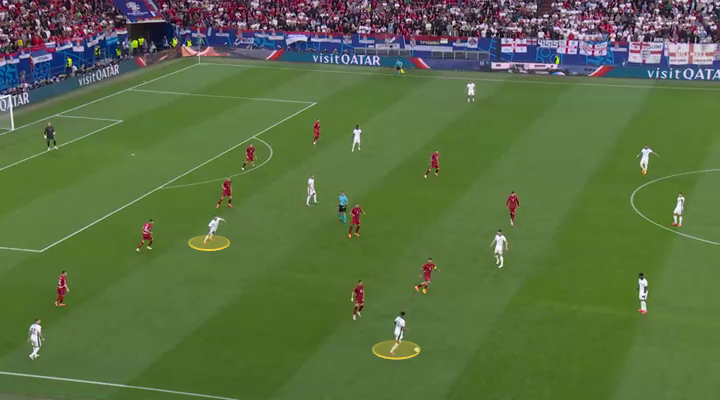
And at the start of the second half, Bellingham spent more time on that flank than Foden.

And it’s worth remembering that while Bellingham started his Real Madrid adventure as a No 10 or a false nine, he ended the season often playing from the left, with Vinicius Junior and Rodrygo as the strike partnership.
Beyond that, if the idea is for the left-sided player to drift inside, getting two men between the lines, then we should surely think about that system as the starting point, not who is the No 10 ‘on paper’. And playing them the other way around would ultimately mean Foden shifting across to his favoured inside-right position, and Bellingham drifting into the inside-left role where he did much of his best work for Madrid. They’d spend more time in positions like this…
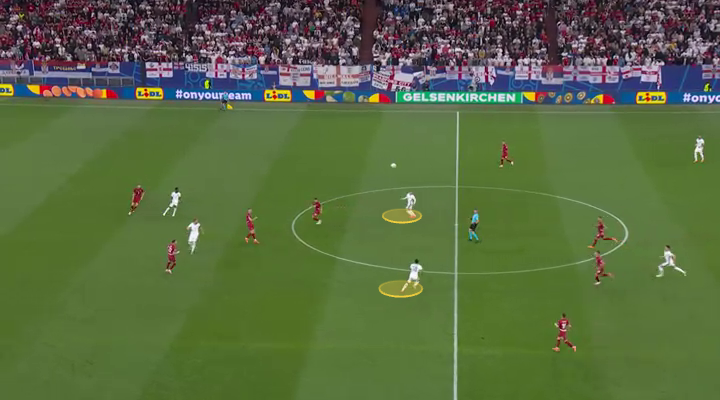
It might seem strange, and fielding England’s match-winning No 10 from the left in the next game would inevitably bring criticism, regardless of the performance. But the Scholes example from Euro 2004 shouldn’t be held up as the decisive example.
Other nations make these compromises too — often with great success.
(Top photos: Getty Images)
Read the full article here


